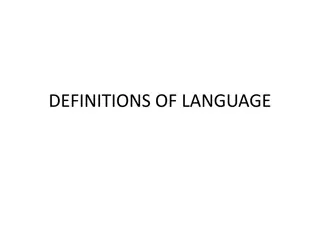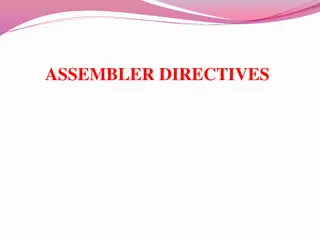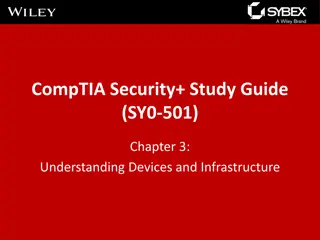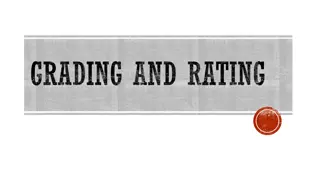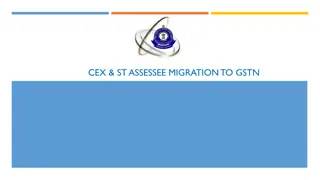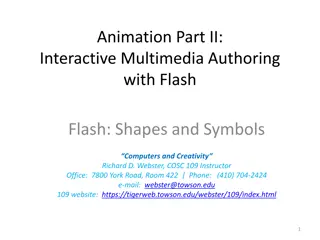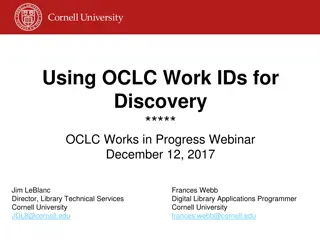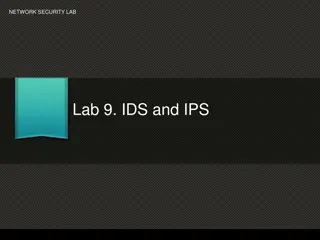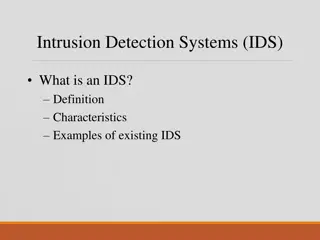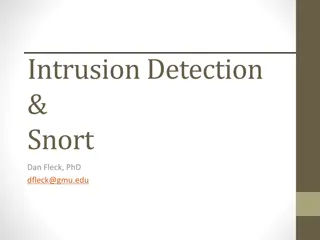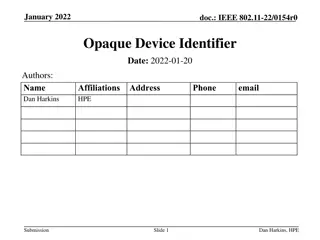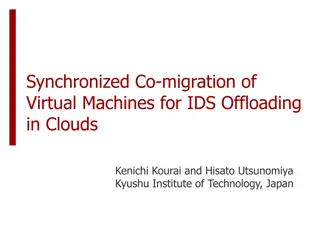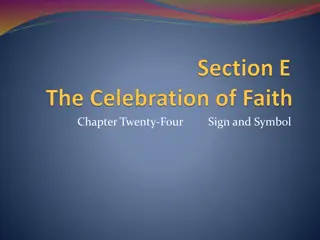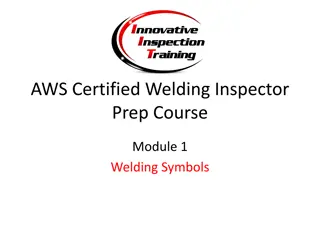Understanding P&IDs and Symbols in Process Engineering
An insightful primer on P&IDs and symbols for students unfamiliar with EMEC125 and EMEC130 courses. The article delves into the definition of P&IDs as schematic diagrams illustrating the relationship between instruments, controllers, piping, and equipment. It explores the widely understood acronym "P&ID" and the various interpretations of its constituent letters. Additionally, it discusses the absence of a universal standard for P&IDs, introduces the upcoming ISA-5.7 standard, and highlights the valuable information derived from P&IDs, such as instrument lists and control loop essentials.
Download Presentation

Please find below an Image/Link to download the presentation.
The content on the website is provided AS IS for your information and personal use only. It may not be sold, licensed, or shared on other websites without obtaining consent from the author. Download presentation by click this link. If you encounter any issues during the download, it is possible that the publisher has removed the file from their server.
E N D
Presentation Transcript
P&IDs and Symbols A Primer for Students who have not taken EMEC125 EMEC130
P&ID Widely Understood? P&ID is an acronym that is well understood to be the document used to define a process. Definition: A schematic diagram of the relationship between instruments, controllers, piping, and system equipment. (Kirk, Weedon, & Kirk, 2014, p. 23) P&IDs are a symbol based schematic language that once understood, adds simplicity to the information being presented. They can also be confusing when a unique symbol appears. There is no real standard for what should be included on the drawing.
P&ID Acronym What does P&ID stand for? The letter meanings are not universal. P could stand for Piping or it could stand for Process . I could represent Instrumentation or represent Instrument . D could mean Drawing or it could mean Diagram . Which ever is used, including those not listed, we are all talking about the same document(s).
New ISA Standard ISA-5.7 (Not Yet Released) As mentioned, there is no universal, national, international or international multi-discipline standard that covers the development and content of P&IDs (Meier & Meier, 2011, p. 27) The ISA is in the process of creating a standard that will be known as: ISA-5.7 and is based on the Process Industries Practice (PIP) PIC 001. There is a standard that governs the symbols used on P&IDs. This standard is ANSI/ISA-5.1-2009 Instrument Symbols and Identifications. (See the introduction to this course)
What Comes From P&IDs? Instrument Lists or Index Documents specifications, acquisition and installation Motor Lists Size, horsepower, voltage Piping Line lists, sizes, service and purpose Tanks & Vessels Information about tanks and vessels All this information is used to lay out equipment, start specifying and purchasing the necessary equipment.
Control Loop A collection of equipment consisting of at least three devices used to automatically control a process or a part of a process The three most common devices is: A transmitter used to sense the PV and transmit the measured value to a controller A controller used to compare the PV with a setpoint and generate a signal based on that comparison A final control element that corrects the process
ANSI/ISA-5.1 As stated earlier, the ANSI/ISA-5.1 is most often used by designers as the standard for symbology. Following is a direct quote from the standard: The symbols and identification methods contained in this standard have evolved by the consensus method and are intended for wide application throughout all industries. The symbols and designations are used as conceptualizing aids, as design tools, as teaching devices, and as a concise and specific means of communication in all types and kinds of technical, engineering, procurement, construction, and maintenance documents and not just in Piping and Instrumentation Diagrams. (International Society of Automation, 2009)
Identification Letters The ANSI/ISA-5.1-2009 Instrumentation Symbols and Identification standard lists the preferred First Letter and Succeeding Letters. The standard also lists typical letter combinations. Keep these lists handy when reading or creating P&ID s.
Instrument Identification (Tag Numbers) All instruments should have a metal, plastic or paper tag attached to them that states an instrument identification number; known as a Tag Number . There are several numbering schemes; however, the ISA standard, ISA-RP-5.1 (1949) superseded by ANSI/ISA-5.1-1984 (R 1992) superseded by ANSI/ISA-5.1-2009 is the most common. Tag numbers are an alpha-numeric code where the: Alpha portion should be no more than four upper case characters Numeric portion should be know more than four digits. The smaller the tag number, the better.
Typical Instrument Tag Number PDT 102 Instrument Identification or Tag Number PDT Function Identification P 102 Loop Identification 102 Loop Number P - First Letter DT - Succeeding Letters The most common identifiers are used for the most common process variables in process control: F Flow L Level P Pressure T - Temperature Note: Hyphens are optional as separators
The Letter X as a First Letter The letter X as a first letter in a special case. The ANSI/ISA-5.1-2009 Standard states: First-Letter or Succeeding-Letter for unclassified devices or functions (X), for non-repetitive meanings that shall be defined outside tagging bubbles or by a note in the document. (International Society of Automation, 2009) A legend sheet and descriptive letters next to the bubble should define the function letter X . Proper use is to not use the letter X frequently and when used should only be used once, or at least in a limited capacity
Symbology Building Blocks FT FIC Circles (Bubbles) Squares & Rectangles Triangles Half Circles Lines 2 PT 102 FIC 1 6TE P R 2584-23 C I 12
Instrument Location Information ISA standard instrument symbols, location and accessibility Symbols are used to help identify the type of: Instrument Location Located in the field Not panel, console or cabinet mounted Visible at the field location Accessible to the operator Located in or on front of central or main console or panel Visible on front panel Location at rear of main or central panel Not accessible to the operator
Instrumentation Devices or Function Symbols Field Mounted Discrete Instruments Computer Systems And Software Alternate Choice Or Safety Instrumented System Primary Choice Or Basic Process Control System
Instrumentation Devices or Function Symbols Normally Accessible to Operator Discrete Instruments Computer Systems And Software Alternate Choice Or Safety Instrumented System Primary Choice Or Basic Process Control System
Instrumentation Devices and Function Symbols Normally inaccessible to the operator or behind-the-panel devices or functions Discrete Instruments Computer Systems And Software Alternate Choice Or Safety Instrumented System Primary Choice Or Basic Process Control System
Instrumentation Devices and Function Symbols Auxiliary location normally accessible to the operator Discrete Instruments Computer Systems And Software Alternate Choice Or Safety Instrumented System Primary Choice Or Basic Process Control System
Instrumentation Devices and Function Symbols Normally inaccessible to the operator or behind-the-panel devices or functions Discrete Instruments Computer Systems And Software Alternate Choice Or Safety Instrumented System Primary Choice Or Basic Process Control System
Instrumentation Devices and Function Symbols 6TE P R 2584-23 Instrument With Long Tag Number Instruments Sharing Common Housing * Purge or Flush Device ** Rest for Latch-Type Actuator ** * It is not mandatory to show a common housing ** These diamonds are approximately half the size of the larger ones
Instrumentation Devices and Function Symbols C I 12 Undefined Interlock Logic *** Panel Mounted Patchboard Point 12 Diaphragm Seal Pilot Light *** For specific logic symbols, see ANSI/ISA Standard S5.2
Instrument Line Symbols Instrument Supply Or Connection to Process Undefined Signal Pneumatic Signal Electrical Signal OR Hydraulic Signal
Instrument Line Symbols Capillary Tube Electromagnetic or Sonic Signal (Guided) *** Electromagnetic or Sonic Signal (Not Guided) *** Internal System Link (Software or Data Link) *** Electromagnetic phenomena include heat, radio waves, nuclear radiation, and light.
Instrument Line Symbols Mechanical Link Optional Binary (ON OFF) Symbols Pneumatic Binary Signal Electric Binary Signal OR
Final Control Elements - Valves Generic Two-way Straight globe Gate Generic Two-way Straight globe Gate Ball Valve Screw-down Generic 2-Way Powered Generic 3-Way Generic Two-Way Angle Generic 4-Way
Final Control Elements - Valves Pressure-reducing regulator, Internal pressure tap Backpressure regulator, Internal pressure tap Generic pressure safety valve, Pressure relief valve Backpressure regulator, External pressure tap Pressure-reducing regulator, External pressure tap
Primary Flow Measurement - Flowmeters Standard Pitot Tube Turbine, Propeller Vortex Shedding M Magnetic 01 Magnetic 02 Positive Displacement Variable Area
Differential Pressure - Flowmeters FT *01 FT *01 FT *01 FT *01 CT PT VC Single connection. The CT = Corner Tap, PT = Pipe Tap, VC = Vena Contracta Taps. These three are not very common. Double connections to the process. PT = Pipe Tap, VC = Vena Contracta Taps. FT FT *01 FT FT *03 *02 *03 VC PT http://www.pipingguide.net/2009/06/types-of-pressure-taps.html
Pneumatic Control Loop Pneumatic Controller PIC 103 Pressure Transmitter PT 103 Control Valve Pressure Valve Fail Open (FO) PV 103 FO Control Loop 103 Pressure Control Loop
Valve Failures Valves can fail in various positions Fail Open (FO) Fail Closed (FC) Fail Locked (FL) Fail in Last Position, Drift Open (FL/DO) Fail in Last Position, Drift Closed (FL/DC) Valves are shown on a P&ID by a shape that resembles a bow tie Actuators are shown with a line from the bow tie junction to a shape such as a half circle, a square, a horizontal line, etc. (More on valve symbols later in the chapter. The next slide shows symbols for valve failures
Valve Failures - Symbols Method A Method B Fail to open position FO Fail to closed position FC Failed to last position FL Fail to last position, Drift open FL/DO Fail to last position, Drift closed FL/DC NOTE: 1. Users engineering a design standards, practices, and/or guidelines shall document which symbols have been selected. 2. The symbols are applicable to all types of control valves and actuators. From: ANSI/ISA-5.1-2009 page 34
Electronic Control Loop Electronic Controller FIC 205 I P Transducer Electronic FT FY Flow Transmitter 205 205 FV 205 FO Flow Element Orifice Plate FE 205 Control Loop 205 Electronic Flow Loop





